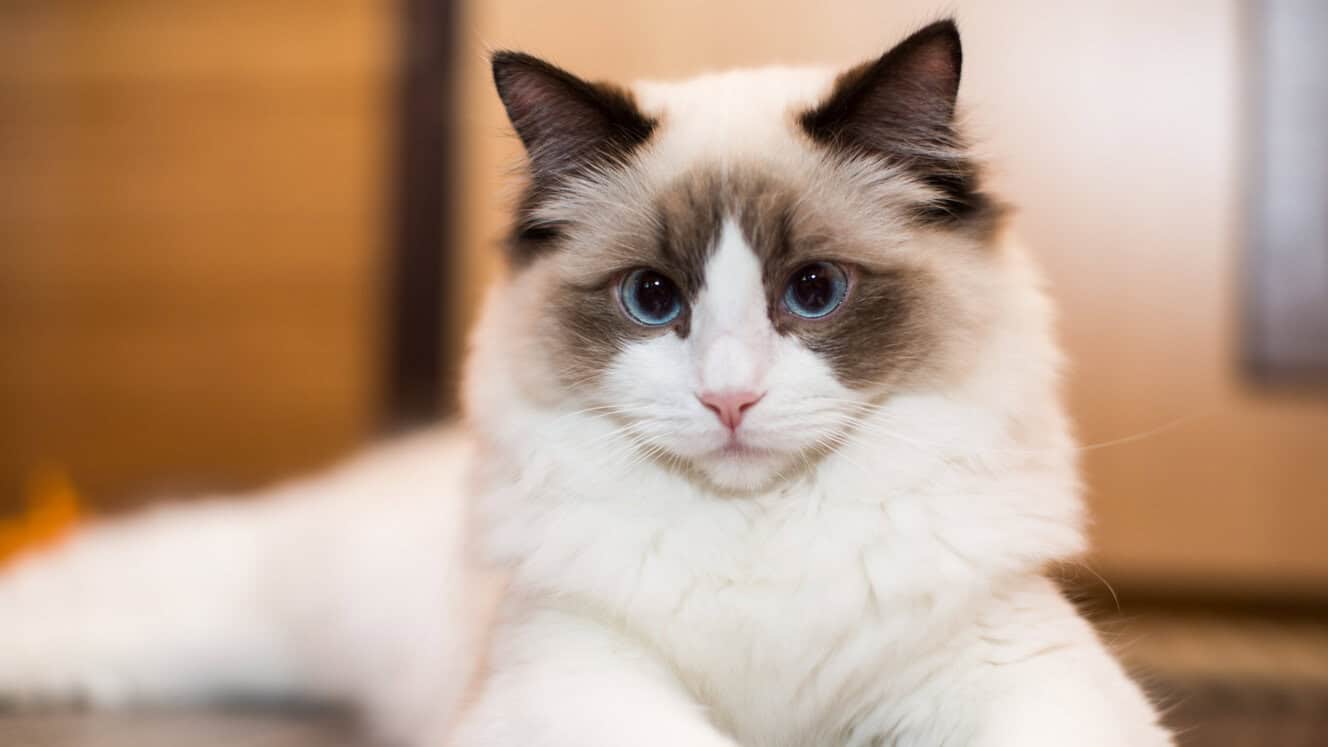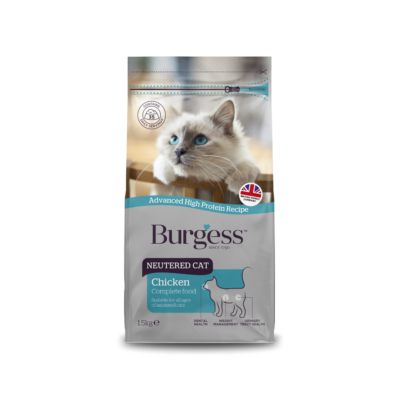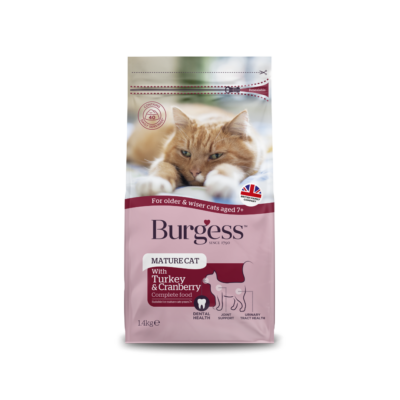
Ragdoll cats are an incredibly endearing breed with their soft, silky coat, big bushy tail, distinctive colour points – their body is lighter in colour than their face, legs, tail and ears – and calm, affectionate nature.
Along with their beautiful oval-shaped eyes and super cute nose that turns up at the tip, Ragdolls are also known for their adorable ‘smiling’ facial expression. Alan Edwards, former president of The British Ragdoll Cat Club and international judge, deemed the breed to be ‘alarmingly beautiful’.
“Ragdolls are stunning to look at, and known for their wonderful temperaments,” enthuses Your Cat. “It is the second most popular breed registered with the Governing Council of the Cat Fancy (GCCF) and ranks even higher with owners!”
Where did Ragdoll cats get their name?
The much-favoured Ragdoll – which is one of the largest domestic cat breeds – got its name because they become so relaxed when they’re held by their favourite human, and was developed by Anne Baker from California, in the early 1960s. A pure white longhaired cat named Josephine was the matriarch of the breed, which was created with the help of a seal mitted male named Daddy Warbucks and a solid black cat named, appropriately, Blackie.
Ragdolls first made an appearance in the UK in 1981, and the breed was officially recognised by the GCCF in 1990.
Are Ragdolls the ultimate lap cat?
These people-loving felines like to spend their time hanging out with their human family and will often lie across an available warm lap when it’s nap time – but not in every case.
The UK Ragdoll Cat Community says: “The term 'lap cat’ is often used when describing the Ragdoll and while this is true for many Raggies, it is important to make the point that every Ragdoll is an individual and some do not enjoy sitting on their owner’s lap. That’s not say they are not affectionate, but they prefer to sit close by or on their owner's feet!”
Read on to find out more about Ragdoll cats – from grooming, to feeding and providing them with everything they need to live a fulfilling and happy life. But first, check out these fun Ragdoll cat facts!
ASTONISHING RAGDOLL CAT FACTS
- Ragdolls are quite hefty cats – females weigh from 8 to 15 pounds (3.6 to 6.8 kg) and males are even larger, ranging from 12 to 20 pounds (5.4 to 9.1 kg) or more!
- Ragdolls mature slowly and may not reach their full size until they are around 4 years old.
- Their beautiful blue eyes are one of their most admired features.
- Ragdolls are often referred to as being ‘dog like’ due to some of their rather charming behaviours, such as doggedly following their human from room to room and enjoying playing games of fetch.
- Ragdoll kittens are born completely white with the points colour starting to develop a few days after birth. As Ragdoll kittens grows, their colours will continue to develop and, as an adult, may darken over time.
- Like other long-haired cat breeds, Ragdolls have tufts of hair between their toes, which can help shield their paw pads from harsh surfaces, provide better grip on slippery surfaces and keep their paws warm in cold weather.
- Famous Ragdoll owners include singing sensation Taylor Swift, who adopted Benjamin Button in 2019 after meeting him on the set of one of her music videos, comedian Jason Manford, who has Elvis and Sergio, and TV presenter Holly Willoughby, whose much adored cats are Teddy and Bluebell.
RAGDOLL PERSONALITY PROFILE
Highly affectionate Ragdolls tend to be more interested in what their humans are doing than some breeds of cats. They are likely to always greet you at the door (even if you’re just coming back in from taking the rubbish out), follow you from room to room, nap with you, chat with you, and generally choose to be wherever you are.
The British Ragdoll Cat Club describes them as: “A cat who will meet you at the door when you return home, who will chatter to you when the mood takes them, and who will rely on you to give them all the love so that they will be able to return it to you tenfold.”
“Ragdolls have the ‘purrsonality’ to match their size and beauty,” states the UK Ragdoll Cat Community. “They are loving, gentle and docile. The loyalty they afford their owners can be compared to that of a dog, as they are not independent and aloof, but crave company and attention, wanting to be with their owners at every opportunity. Once you share your home with a Ragdoll, you adopt a shadow, who will follow you everywhere and I mean, everywhere!”
“They love to be around people and with their unique 'smiley' expression they are so easy to be with,” adds Your Cat. “The more love and attention you give to a Raggie, as they are affectionately known, the more love and attention you get back.”
“Ragdolls are very wonderful companions as they are empathetic and in tune with human emotions,” notes Petplan. “They’re peaceful, sociable and inquisitive. A Ragdoll cat’s personality means they’re a delight to be around.”
IS MY HOME SUITABLE FOR A RAGDOLL CAT?
These large, affable cats will generally adapt well to most home situations, as long as someone is around most of the time.
The GCCF describes Ragdolls as having: “An easy, laid-back temperament and in general loves interaction with people and other animals.” Ragdoll Rescue UK says: “Ragdolls love company, they generally do not fare well being left alone for significant lengths of time.” Petplan adds: “They’re ideal for cat owners who work from home, or who can spend hours with them.”
“Calm and a laid back in nature, generally Ragdolls will settle into most situations and will live happily with other pets and children,” notes the UK Ragdoll Cat Community.
Linda Moore of the Progressive Ragdoll Breed Cat Club, says: "They're extremely good with children and react exceptionally well to them. They can sense personalities and boisterousness and will play with them in different ways based on that. I have never, ever known a Ragdoll to scratch a child – they work out what to expect and retreat away if needed."
“This breed is ideal for a busy family atmosphere,” adds Petplan. “They can tolerate reasonable levels of household noise, and their playful nature means they love being with children under supervision, provided they’re well socialised and their space is respected.”
“Ragdolls have a wonderfully gentle, laid-back temperament and their popularity as the ideal house pet who is totally devoted to their owners has become legendary,” enthuses The British Ragdoll Cat Club. “As kittens they are full of life and inquisitive, and as they mature, they become very loving, trusting cats who follow their owners everywhere. They love human company.”
Companionship super important to Ragdolls. Linda Moore adds: “It's not ideal for them to be the only pet in the house, especially if you're out at work all day. They do need some sort of companion. They're quite laid-back though and will happily settle with any animal.”
Ragdolls may be a perfect fit for people looking for a predominately indoor cat. Your Cat advises: “Large and playful they may be, but they are well known for their easy going, 'that's life' attitude. For this reason, they are usually kept as indoor cats and not let out unless under strict supervision. They may be many things, but they're not street savvy!”
If you do have outdoor space for your Ragdoll to enjoy, ensure that it’s cat-proofed so they stay safe and can’t wander off.
WHAT DO RAGDOLLS LIKE TO DO?
While every cat is an individual with a unique set of likes and dislikes, there are certain things that are extremely important to Ragdoll cats. High on the list is plenty of playtime with their human companions, with intriguing things to bat about, explore – and hide!
“Ragdolls are fun and mischievous too. They love playing and make great retrievers, if a little time is dedicated to training them,” says the UK Ragdoll Cat Community. “Our Ragdolls enjoy a game of fetch the ‘mouse’ or ‘ball’ and any games are played with exceptional Ragdoll manners, without claws or teeth!”
If you have a Ragdoll cat, be aware that they’re experts at luring you into their games.
“Ragdolls like to play with someone, not just on their own, and they can be very persuasive at encouraging others to join in, once they have decided it is playtime,” adds the UK Ragdoll Cat Community. “Any open box just has to be investigated, and sweet tins are completely fascinating to a Ragdoll whose idea of heaven is a small ball of tin foil. Other interesting items include straws, pencils, pens (especially if you're writing with them at the time), small ornaments, in fact anything they can comfortably carry and then lose. This can be intentionally, such as when placing inside your shoe, or accidentally under a heavy piece of furniture. The latter is usually accompanied by loud crying until you move said piece of furniture and retrieve the 'toy' for them.”
In fact, regularly playing with your Ragdoll provides them with an important boost to their health, fitness and general wellbeing. The GCCF advises that: “Exercise through play is essential to keep them fit and healthy.”
Petplan adds: “This breed can easily gain weight, especially as they like to relax a lot. Training your Ragdoll cat, playing fun games with them and giving them lots of interactive toys to play with helps them to exercise and manage their weight.”
And, when it comes to choosing all the cat kit and feline accessories, due to their size, when you have a Ragdoll cat in your life you’ll need to think big – ample, comfy sleeping spots, spacious hideaway places, roomy litter trays, generously-sized cat tunnels for them to run through and play in – and very sturdy scratching posts and climbing trees that will support their weight.
GROOMING YOUR RAGDOLL CAT
Recognised colours for Ragdolls are seal, blue, chocolate, lilac, red and cream, along with tortoiseshell and tabby patterns. However, these luxurious coats require quite a bit of looking after.
“A Ragdoll cat’s grooming requirements are lower maintenance than some other long-haired breeds, but they still need lots of care,” says Petplan. “Unlike their Persian, Siberian or Ragamuffin cousins, Ragdoll cats have a single coat without an undercoat. The benefit of this means there’s much less fur to manage, and less shedding, although they still shed more than the average shorthaired cat.”
“Their coats are soft and silky with beautiful ruffs and knickerbockers,” says The British Ragdoll Cat Club. “A thorough grooming is recommended at least twice a week. Make grooming fun for your pet and he will look forward to this special time with you each day.”
The GCCF advises: “Their coats do require regular weekly maintenance and they do moult so extra grooming during these periods is essential. A Ragdoll’s coat will mat if left unattended.”
FEEDING YOUR RAGDOLL CAT
As a large cat, you may find that your Ragdoll eats a little more than most cat breeds.
Petplan advises: “As one of the largest breeds of domestic cat, Ragdoll cats can have big appetites. Getting their diet right is important for their long-term health.”
As with all domestic cats, Ragdoll cats obligate carnivores and must be fed a meat- based diet.
“The best food for your Ragdoll is a complete, balanced diet which is suitable for the current life stage of your cat,” adds Petplan. “When it comes to feeding requirements for Ragdoll cats, you’ll need to ensure they eat enough to support their metabolism, whilst keeping an eye on their intake and exercise ensuring they don’t become overweight.”
The insurer notes that due to their generous coat and bigger physique, weight gain can be hidden, advising: “Being overweight could add stress to their joints and heart. If you’re not sure about the ideal weight for your Ragdoll cat it’s always best to consult with your vet.”
An easily accessible supply of fresh water is also vital, placed away from their food bowl.
GETTING A RAGDOLL CAT
If you’re looking for a kitten, only ever buy from a reputable, registered breeder. Ragdolls can carry a gene that leads to a form of heart disease called HCM (hypertrophic cardiomyopathy). Whilst this condition is not curable, it can be treated with lifelong medication. The GCCF requires all its assessed breeders to carry out genetic testing, to avoid passing on the HCM gene.
Alternatively, visit Ragdoll Rescue UK, the UK Ragdoll Cat Community, or theBritish Ragdoll Cat Club Rescue and Rehome Facebook page to find beautiful cats looking for happy new homes. Also check out other rescue charities such as Cats Protection, Battersea, Blue Cross, RSPCA and Woodgreen, who’ll be delighted to hear from you, and can provide you with lots of helpful advice on adopting a rescued cat.
EVERY CAT DESERVES A DELICIOUS, NUTRITIOUS DINNER!
At Burgess Pet Care, all our cat food is made using premium ingredients to ensure excellent quality and superior taste to help keep your cat happy and healthy – from kitten, to adult and mature and Burgess Neutered Cat with Chicken – an advanced, high protein, complete food with added L-Carnitine to help maintain a healthy weight.
- Salmon? Duck? Chicken? Let your adult cat pick their favourite flavour with our fussy cat bundle >>
- Our cat diet and nutrition guide is here to help you create a meal plan that's tailored especially for your feline friend.
- How often should you feed your cat? Find out why little and often suits most cats – and the reason why play should be part of your feeding routine.
- Adapting your cat’s diet throughout their life What you choose to feed your cat can make all the difference.
CARE MORE Find out more about caring for your cat from Burgess, the Pet Care Experts.
If you found this interesting, you may also like:
THE CAT COMMUNICATION GUIDE From purrs to scent signals, body postures and blinking, yowls to growls – cats communicate in a variety of ways. They’ve even ways of communicating with humans – cats don’t bother to meow to other cats – just us!
ARE YOU AND YOUR CAT MORE ALIKE THAN YOU THINK? If you have a grumpy Tabby cat, a super friendly Ragdoll cat, or fiendishly feisty Bengal cat, could this actually say more about you than your pet?
THE NEXT BIG STEP FOR YOUR LITTLE CAT When does your kitten become a cat? What changes will you see in their behaviour? When do you need to switch them over from kitten to adult cat food – and what are the nutrition differences that benefit them as they grow?
CAT BREEDS – TAKE A CLOSER LOOK AT SOME OF THE UK’S MOST POPULAR TYPES OF CAT Siamese or Bengal? Norwegian Forest or Maine Coon? Ragdoll or Russian Blue? Which breed of cat do you find most captivating? We count down 10 cat breeds that are riding high in the popularity charts, plus one favourite feline that’s not actually a breed at all…
WHEN SHOULD YOU NEUTER YOUR CAT? As well as preventing unwanted pregnancies, neutering benefits your favourite feline’s health and wellbeing in all sorts of ways. In fact, feline experts believe it’s the kindest thing you could do for your cat.
CAN YOU TRAIN A CAT? Felines excel at training their human guardians to give them food, attention and a cosy lap to curl up on. But is it possible for us to train them?
HOW TO TELL IF YOUR CAT REALLY LOVES YOU While you may adore your captivating cat, how does your enigmatic feline companion feel about you?
MUSIC TO THEIR FURRY LITTLE EARS? What’s on your playlist? Cat Stevens? The Stray Cats? The Pussycat Dolls? And have you ever wondered if your cat appreciates your taste in music, or would they prefer music created especially for them? Yes, it’s a thing!
PLAY BEHAVIOUR OF CATS SURPRISES SCIENTISTS While there are lots of things that cats do which cause scientists plenty of head-scratching moments, new research into the way that cats play has resulted in some rather baffled boffins...
THE EYES HAVE IT When it comes to the mysterious task of understanding cat language, focusing on one of a feline’s most appealing features – their captivatingly beautiful eyes – could be the key.
SHOULD LILIES CARRY A HEALTH WARNING? Did you know that lilies are so poisonous that a cat can suffer fatal kidney failure just from nibbling a leaf, licking pollen off their coat or even from drinking water from a vase with cut lilies in it?
DOES YOUR CAT RECOGNISE YOUR HAPPY FACE? How do cats see humans? Do cats recognise faces? Do cats remember people? Do cats miss their owners? Do we own cats or do cats own us?
IS YOUR CAT REALLY MAD AT YOU? Whether it’s because you’ve had to take them to the vet, or you accidentally stepped on their tail, your cat may give you the impression that they’re really cross with you. But can cats really hold grudges?
HOW TO HANDLE YOUR CAT Cats like to feel in control of whatever situation they’re in and are quick to show when they’re not happy. Never is this more evident when it comes to being handled when they don’t want to be.
MY CAT IGNORES ME – WHY? Unlike dogs, who generally want to be involved in every situation, cats are known for being independent. While some cats can be quite social, it can be hard to take when your favourite feline seems to take absolutely no notice of you. So why is this the case?
GIRLS V BOYS – FELINE MYTHS AND MISCONCEPTIONS Do male and female cats act differently because of their gender? Are generalisations about laid back, lap-loving boys and aloof, independent girls simply myths – or is there any truth to them?
DOES YOUR CAT KNOW THEIR NAME? Whatever name we choose to bestow upon our beloved pet cats, does it make any difference to them? Do they actually understand that they’re called Alfie or Bella or even Archibald von Snugglemuffin?
THE HOMING INSTINCT – CAN CATS REALLY FIND THEIR WAY HOME? Top tip – it’s much easier if they’re microchipped! Plus, what a change in the law means for every cat owner…

















